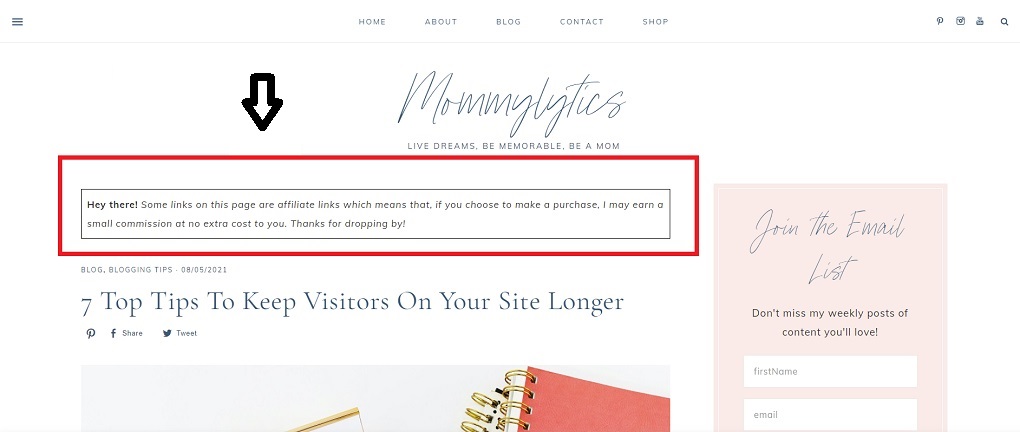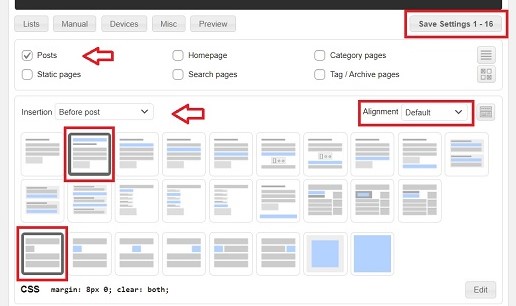
There are a few ways in which bloggers earn their income. Some of these ways include writing sponsored posts, creating products, providing services, offering courses, and affiliate marketing. Of all those mentioned, affiliate marketing might the most popular and for a good reason. It’s a great way to make money online, and if you are a content creator with a dedicated set of products you use in your business, why not recommend them to your audience and earn a commission. On that note, let talk about what is Affiliate Marketing.
What is Affiliate Marketing?
Affiliate marketing is when you apply for and get accepted to promote a company or a person’s product or services using an affiliate link unique to you. You can add these links wherever your audience can click and get the product or service you recommend. When someone uses your affiliate link, you earn a commission, which is usually a percentage of the sale.
Suppose you are an affiliate marketer who may earn a commission by mentioning brands, services, or products on your blog, emails, YouTube channel, social media platform, or anywhere on the internet. The FTC (Federal Trade Commission) requires you to disclose this relationship to your audience. This sets the precedence for good business practices, and your audience will appreciate your transparency and be more willing to try the products you are recommending. It’s also a good idea to recommend products you have used or are currently using. This is the best way to give an honest promotion, at least in my opinion. Affiliate marketing is one of the best ways to monetize your blog if you are not offering any products or services. Just in case you have not started your blog yet, this post will help you get the ball rolling ‘Simple Steps To Get Your Blog Started.’
How To Add An Affiliate Disclosure To Your Blog?
An easy way to let your audience that you use affiliate marketing, whether by inserting an affiliate link in your posts or otherwise, is by adding a disclosure. The method shared in this blog post will make the process a bit easier by adding your disclosure to every published page on your blog. I don’t mind this method; it prevents me from worrying whether I have added my disclosure to a post with which I shared my affiliate links. Yup, Im, a one-and-done blogger. Here is a screenshot of the affiliate disclosure on my blog.

For bloggers, the FCT requires you to display your affiliate disclosure in a location that your audience is unlikely to miss. Your fonts must be clear and legible; that means adding your disclosure at the end of blog posts in a small font size would be insufficient. Instead, it would be best if you placed your disclosure at the top of your posts. Don’t worry; using this method, you can preview the placement of your disclosure before adding it to your blog. For the full FTC guideline on affiliate disclosures, see this link. Now let’s jump right into the tutorial.
1 I Download and Activate The Free Plugin ‘Ad Inserter’ In WordPress
From your WordPress dashboard select plugin> add new> search Ad Inserter. Install and activate.

After you’ve activated the plugin. Click on settings and select ‘Ad Inserter’ to open plugin
2 I Add Affiliate Disclosure Message
The ad inserter is going to display your disclosure on every page. Select tab one, rename it as you desire ‘affiliate disclosure or disclaimer,’ then type your disclosure in the black text box.
Add the following HTML code at the beginning and end of your message: <em> and </em>
So your disclaimer may read something like this <em> Posts on this blog may contain affiliate links which mean, if you make a purchase, I may earn a commission at no cost to you </em>
3 I Plugin Settings

> Check Posts
> Insertion–select before post
> Alignment– default based on your theme
4 I Save Settings 1- 16
Don’t forget to hit the SAVE settings 1- 16 button.
Then head over to your blog to view your new Affiliate Disclosure notice.
Your affiliate disclosure should be appearing on all pages of your blog. Now that was quick and easy I’d say.
If you are looking for tips or ways to keep visitors on your blog longer and make your affiliate links worth it, then this post, 7 Top Tips To Keep Visitors On Your Site Longer, are foundational tips that will help you attract and engage your target audience.
Related Post:
Like all my other posts, I created this post to provide you with value. So let me know in the comment section if this tutorial helped you or if you used a different method to display your affiliate disclosure.










Leave a Reply